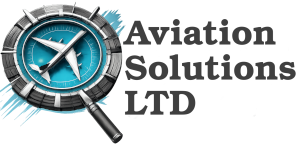Understanding Part 145 Audit Requirements
In the complex world of aviation maintenance, compliance is non-negotiable. For organizations operating under EASA regulations, one of the most critical frameworks is Part 145, which governs the approval of maintenance organizations. Understanding what a Part 145 audit entails is essential for maintaining certification, avoiding non-compliance penalties, and ensuring airworthiness across your fleet or service base.
🛫 What is EASA Part 145?
EASA Part 145 is a regulatory standard established by the European Union Aviation Safety Agency (EASA). It defines the requirements for approved maintenance organizations (AMOs), including their facilities, personnel, procedures, and quality systems.
Organizations under Part 145 must demonstrate that they can consistently maintain aircraft and components in accordance with applicable airworthiness standards.
📋 What is a Part 145 Audit?
A Part 145 audit is a structured assessment that evaluates whether your organization adheres to the requirements set forth in EASA Part 145. Audits can be:
- Initial certification audits
- Surveillance audits
- Renewal audits
- Internal audits (as part of your own Quality Management System)
Audits may be carried out by:
- National Aviation Authorities (e.g. CAA, DGAC, LBA)
- Independent certified auditors
- Your internal quality team (as required by Part 145.A.65)
✅ Key Areas Reviewed in a Part 145 Audit
- Organizational Structure & Approval Scope
– Clear definition of accountable manager and nominated postholders
– Capability list matching approved aircraft or components - Personnel & Training
– Licensing of certifying staff (Part 66)
– Training records, competence assessments, and authorizations - Facilities & Equipment
– Adequate space, tooling, environmental controls
– Tool calibration records - Maintenance Procedures & MOE
– Compliance with your Maintenance Organization Exposition (MOE)
– Up-to-date procedures, document control, and revision history - Quality & Safety System
– Internal audits, findings tracking, corrective actions
– Reporting under Part 145.A.60 (occurrence reporting) - Record Keeping & Data Management
– Work orders, release documentation (EASA Form 1)
– Storage of maintenance and inspection records
🔍 Common Non-Conformities
Even well-run organizations can face findings during a Part 145 audit. Common examples include:
- Outdated or non-compliant MOE sections
- Incomplete tool calibration records
- Gaps in certifying staff authorization files
- Lack of follow-up on internal audit findings
- Deviations from documented procedures
Tip: Regular internal audits and gap analyses can help you catch these issues before an authority audit.
📊 How to Prepare for a Part 145 Audit
- Review your MOE thoroughly
- Perform an internal audit using the latest AMC/GM guidance
- Ensure training and competence records are up to date
- Check tooling and calibration logs
- Prepare your facility for inspection — clean, organized, and documented
🤝 Need Help with Your Part 145 Audit?
At AZ Airworthiness Ltd., we specialize in helping Part 145 organizations:
- Prepare for initial or renewal audits
- Perform internal audits and gap analysis
- Review MOE and associated documentation
- Provide audit training for your compliance team
Whether you operate in Europe or abroad, our expert-led audit support ensures you’re always inspection-ready.
Let’s talk about how we can support your compliance journey.
👉 Contact Us for a free consultation or browse our Services to learn more.


 Follow Us on LinkedIn
Follow Us on LinkedIn